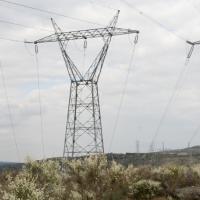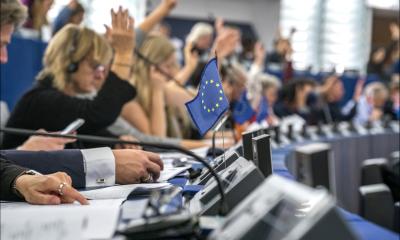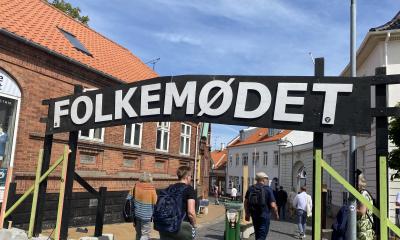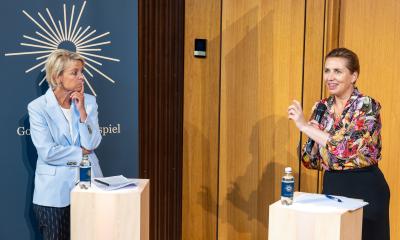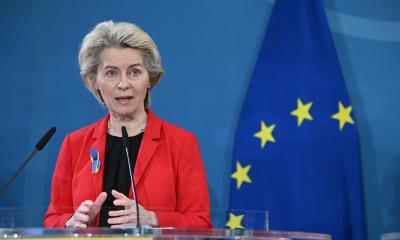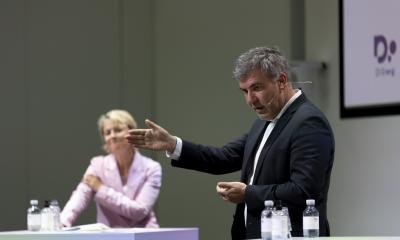The EU green agenda is increasingly shaped by economic security concerns
Ditte Brasso Sørensen and Emmanuel Molding Nielsen show how the EU’s burgeoning economic security agenda is starting to influence its green growth strategy, a development they expect to continue.
When the European Green Deal (EGD) was presented in December 2019, the Fridays for Future movement was at its height and the European Parliament elections in May were seen by many as having delivered a strong green mandate. With the EGD communication the Commission saw an opportunity to link economic growth and the green transition.
Today, the EU faces serious competition not just from China, but also from the USA, following the Biden-Administration's unprecedented Inflation Reduction Act. At home, the journey from green visions to sector specific regulation has caused the EU’s green agenda, and particularly its environmental policy initiatives, to become increasingly contested.
Indeed, years of crisis management is shaping a consensus among European policymakers that the EU is operating in an insecure geopolitical environment. This is beginning to leave its mark on the EU’s green agenda in the form of a growing focus on economic security, which is likely to shape the EU’s green growth strategy under the next Commission.
Assuming that we will see a continuation of the von der Leyen Commission, recent communications on everything from the Net Zero Industrial Act, Biotechnologies, and the 2040 climate target gives us the best indication yet of how the in-coming Commission’s approach to the green transition is changing and what we could expect in years to come.
A tale of three objectives
In recommending a climate target of 90% by 2040, the Commission is laying the groundworks for the next iteration of the EGD and asserting that the imperative of the green transition will henceforth be flanked by two equally important and complimentary objectives: ensuring a just transition and achieving sustainable competitiveness.
Versions of both objectives have been present since the EGD’s inception. After all, the EGD aimed to both make a business case for the green transition and secure a “just and inclusive” transition.[1]
Indeed, 2023 has reminded policy makers just how disruptive political transformation can be when it is perceived to be unjust. Be it Germany’s embattled coalition government’s pledge to phase-out heat pumps,[2] or comprehensive farmers’ protests;[3] the fear of social unrest has refocused policy makers attention on the importance of social and sector dialogue. A renewed focus on economic redistribution in favour of economically vulnerable groups, regions, and hard-to-abate-sectors like agriculture, is likely to be an area of focus in years to come.
An equally important, yet still emerging reformulation of the Commission’s original green pledge, is the changing character of the EU’s sustainable competitiveness and how it is increasingly being influenced by economic security concerns. The EGD has always been a growth strategy. Yet, a perception among EU policymakers that the EU’s geopolitical environment has been changed by growing geopolitical competition and insecurity, is increasingly reflected in the conceptualisation of the EU’s sustainable competitiveness.
Economic security looms large
The race to decarbonise and make an economic success of it has become increasingly competitive in recent years. The Biden-Administration’s Inflation Reduction Act has prompted a steep change in green industrial policy, with the EU struggling to compete with an unprecedented regime of tax credits to strategic green technologies. Likewise, China’s long-term and large-scale support for critical green technologies has underlined the need for the EU to intervene actively to remain a competitive producer of green technologies.
Today, policymakers are responding to competitive pressures from a global clean tech race, by deploying an increasingly vertical industrial policy, characterised by an interventionist logic.[4] The EU’s Net-Zero Industry Act and the recent communication on Biotechnology both seeks simplify the regulatory environment and spur investment in the manufacturing capacity for strategically important green technologies, is emblematic of this policy shift.
Yet, the scale of fiscal interventions deployed by the EU’s competitors is of a magnitude and speed, that the EU will struggle to match. Unlike the US, at this stage, the EU has no tax cuts to offer. The EGD from 2019 recognizes the need for considerable investments to meet the EU’s 2030 target but focuses primarily on light-touch initiatives to nudge and de-risk private investment towards EGD objectives.
Such horizontal measures focused on optimising framework conditions still feature prominently in the 2040 communication. Yet, moving forward, the EU is likely to build on instruments like the Strategic Technologies for Europe Platform (STEP), that streamline access to and mobilize existing EU-level funding and focuses resources on strategically important sectors and technologies.
However, the EU’s recent shift from a horizontal industrial policy focused on optimising framework conditions, to a gradually more interventionist, vertical industrial policy is not just a response to competitive pressures; it is also a response to policymakers’ reassessment of the geopolitical environment the EU is operating in.
The COVID-19 pandemic started a conversation about supply chain resilience and strategic dependencies, that has since been accelerated by Russia’s invasion of Ukraine. While the EGD recognizes the importance of sourcing strategic materials for green industries, the 2040 communication establishes a renewed focus on diversifying “sources of supply […] resilient to supply chains disruptions, price volatility and other shocks.”[5] The communication’s references to strategic autonomy, reducing dependencies, and de-risking supplies speaks to how concerns about economic security are beginning to shape concerns about the EU’s competitive sustainability.
On this point, it is necessary to read the 2040 communication in the context of the Commission’s economic security strategy from June 2023.
The economic security strategy identifies several economic risks such as risks to the resilience of supply chains, including energy security, risks to physical infrastructure and cyber-security of critical infrastructure, risks related to technology and technology leakage, and risks of weaponization of economic dependencies, or economic coercion.[6]
To mitigate these risks the strategy proposes three actions including promoting competitiveness and growth, protecting through targeted instruments, and partnering with like-minded countries.[7] For the purposes of this argument, the broad goal of promoting competitiveness and growth, including of the technological and industrial base, is key.
The strategy goes beyond protective measures, usually associate with security concerns, such as inbound investment and export screening, or instruments to counter economic coercion. Instead, maintaining the “ability to innovate, produce, and commercialize critical technologies”[8] – long-term sustainable competitiveness – itself becomes an economic security concern.
The Commission underscores this in its 2040 target as it explains that “by remaining a global leader and trusted partner in climate action, Europe will simultaneously strengthen its strategic autonomy and diversify sustainable global value chains to be the master of its fate in a volatile world.”[9]
We are already familiar with this line of reasoning when it comes to energy security. What is different is the application of economic security to a growing range of sectors. This is reflected in the Commission’s list of ten critical ‘technology areas’ which include, among others, green and green-enabling technology areas like advanced semi-conductors, biotechnology, energy technologies (including Net-Zero technologies), and advanced materials, manufacturing, and recycling technologies.[10]
This growing focus on a broadly defined vision for economic security is likely to provide a powerful justification for doubling down on sustainable competitiveness as key to achieving net-zero. Indeed, the push for a more vertical industrial policy and economic security are likely to be mutually reenforcing concerns that we expect to shape the form that sustainable competitiveness will take.
The EGD was never just about rapidly decarbonizing Europe, it was also always a green growth strategy. But comparing the EGD to the recent 2040 communication, with its redoubled emphasis on sustainable competitiveness, we get a sense of the direction that the EU’s green policy may take in years to come.
This is a green transition that is increasingly shaped by a vertical industrial policy and that must be understood in the context of a global clean tech race. This clean tech race, shaped by exogenous shocks of COVID-19 and Russia’s invasion of Ukraine, is likely to be increasingly responsive to a logic of economic security, where it isn’t just a question of making a good business case for net-zero, but where sustainable competitiveness is itself a security concern.
[1] COMMUNICATION FROM THE COMMISSION: The European Green Deal. COM (2019) 640 final. 2019, pp, 2.
[3] https://www.euractiv.com/section/agriculture-food/news/snapshot-of-farmers-protests-and-its-not-over/
[4] For an account of vertical and horizontal approaches to industrial see Simone Tagliapietra and Reinhilde Veugelers,’ Industrial policy in Europe: past and future’ in ‘Sparking Europe’s New Industrial Revolution: a policy for net zero, growth and resilience’. Bruegel Blueprint. 2023. Pp. 13-29
[5] COMMUNICATION FROM THE COMMISSION: The European Green Deal. COM (2019) 640 final. 2019, pp.18.
[8] https://ecfr.eu/article/missing-money-why-europes-economic-security-requires-a-critical-technology-investment-plan/
[9] COMMUNICATION FROM THE COMMISSION: The European Green Deal. COM (2019) 640 final. 2019, pp.2.
Tænketanken EUROPA indtager ikke holdninger som organisation. Denne tekst repræsenterer alene – som alle udgivelser fra Tænketanken EUROPA – forfatterens/forfatternes betragtninger.
